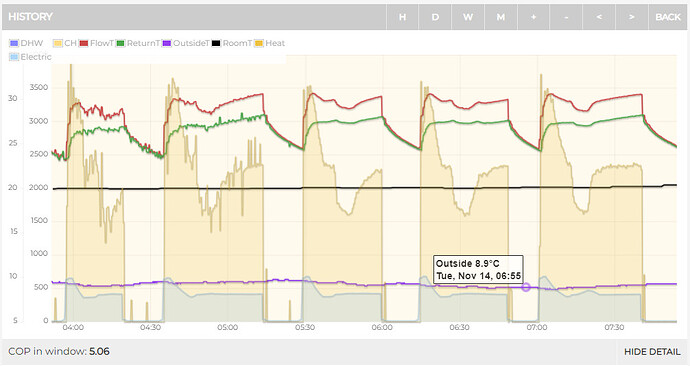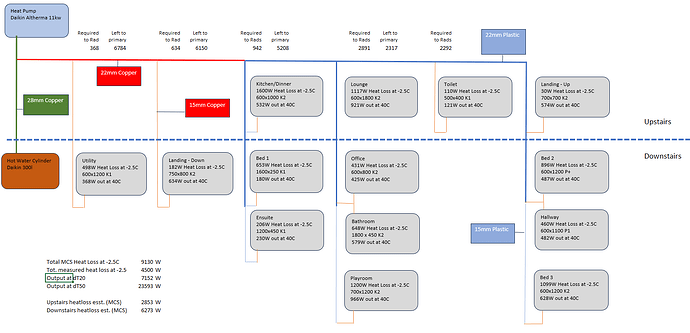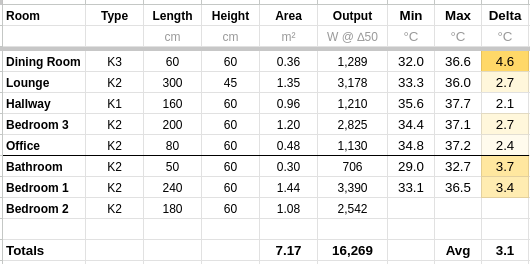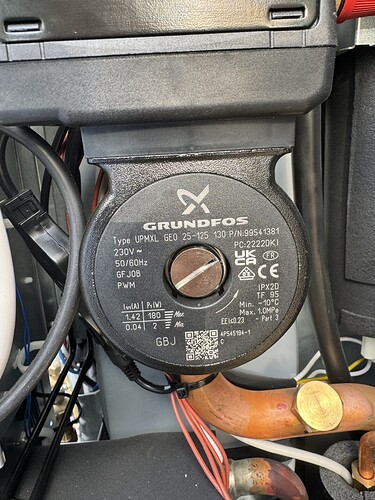22mm copper has a limit of 6kW at DT5.
So that isn’t a great start on that first leg.
You only lose 1kW on the way, so you’ve then got 5kW heading down 22mm plastic.
22m plastic internally is about 18mm? So that’s only capable of around 4 to 4.5kW?
You might just get away with as you’re losing output along the way. And only 4.5kW at -2C.
How did you end up with an 11kW heat pump for a 4.5kW heat loss!! Save that for the other thread!!
The problem I see and one you might wanna get an expert to look at is, can the pump in the Daikin overcome the resistance to reach the furthest away radiator (the index circuit). This is the individual pipe route with the highest pressure loss. This what you size your pump against.
You could try and balance all you want, but if the pump just can’t physically shove the water down all the narrow pipes, then you’ve got no chance.
Think about how hard it is to blow water down a straw compared to blowing water down a 1 inch pipe.
That’s essential asking the pump to do with narrow pipework, blow it down a straw.
This can be overcome perhaps by fitting an extra pump.
Or perhaps replacing the pump. Does the daikin use an internal or external pump?
But this would all need calculating.
It’s amazing that you know all the layout. That will really help.
You could still try balancing to get that playroom rad warm.
You’d close rads down before that playroom rad, ie, all the other rads.
For example, if I fully open all my rads the ones near the heat pump get warm and the ones furthest away stay cold. I start closing down the rads and the furthest away ones start heating up.
You need to provide enough resistance so that the pump can get to these furthest rads (if the pump can that is)
The IMI app will tell you flow rates required for rad sizes, but it can’t tell you what to do with different lockshields.
Heat Geek do a great vid about the differences in lockshield performance
The chart they create in the vid is here
Does that help at all?







